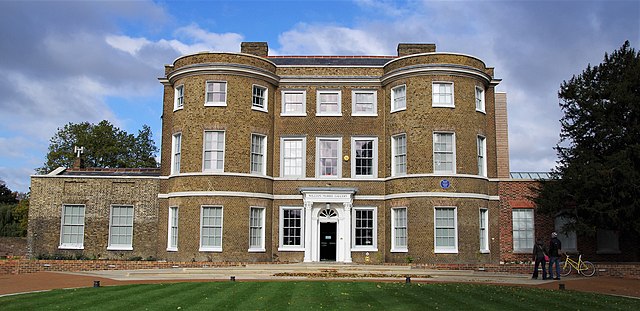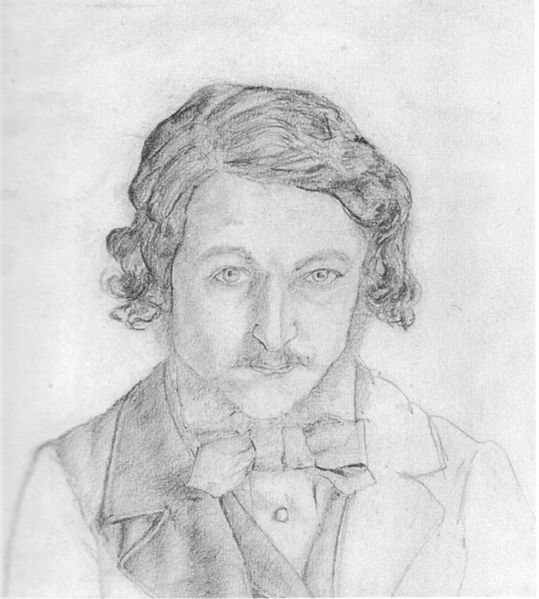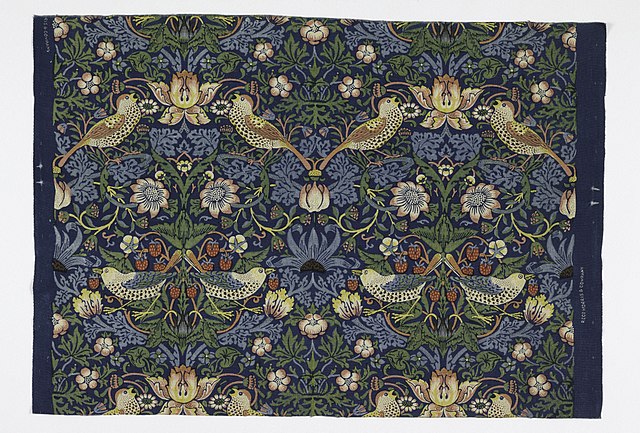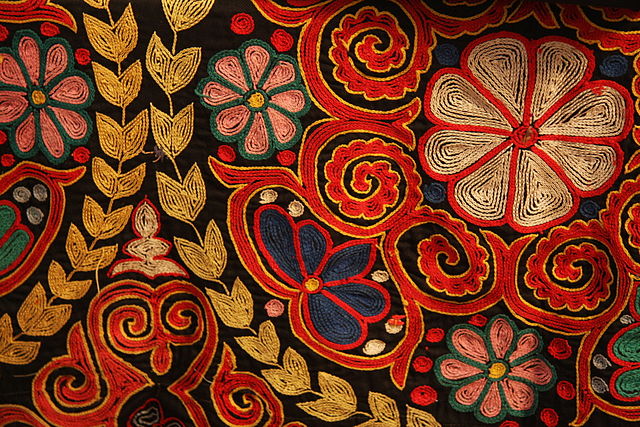William Morris was an English textile designer, poet, artist, writer, and socialist activist associated with the British Arts and Crafts movement. He was a major contributor to the revival of traditional British textile arts and methods of production. His literary contributions helped to establish the modern fantasy genre, while he helped win acceptance of socialism in fin de siècle Great Britain.
William Morris by Frederick Hollyer, 1887
Water House, Morris's childhood home; renovated in 2012, it now houses The William Morris Gallery.
William Morris at 23
William Morris self-portrait, 1856; he grew his beard that year, after leaving university.
Textile design, also known as textile geometry, is the creative and technical process by which thread or yarn fibers are interlaced to form a piece of cloth or fabric, which is subsequently printed upon or otherwise adorned. Textile design is further broken down into three major disciplines: printed textile design, woven textile design, and mixed media textile design. Each uses different methods to produce a fabric for variable uses and markets. Textile design as an industry is involved in other disciplines such as fashion, interior design, and fine arts.
Point paper for Dove and Rose woven double cloth by William Morris, 1879.
Printed textile design: William Morris, Strawberry Thief, 1883.
Woven textile design: A woven Navajo saddle blanket from the Philbrook Museum in Tulsa, Oklahoma.
Mixed media textile design: An embroidered Kazakh, chain stitched rug.








